Visiting churches might not sound like everyone’s idea of a great time. Yet the buildings are stuffed with strange carvings, peculiar graffiti, interesting artwork, and even sassy memorials. These church curiosities tell us a lot about what mattered to people in centuries past.
They also preserve folklore, legends, and the beliefs of the congregation. From apotropaic marks scratched onto fonts, to stone guardians on the outer walls, churches are a fascinating repository of folk practices…if you know where to look. That’s precisely what we’re going to do here, looking at gargoyles, grotesques, graffiti, carvings, and even door knockers. In so doing, we’ll figure out what they have to do with folklore, and what they tell us about our forebears.
I’m not going to cover the inevitable foliate head in this episode, because I’ve already done so when I talked about the heads and their conflation with the so-called Green Man in the Jack-in-the-Green article. For the discussion of particularly rude carvings in churches, I direct you to James Wright’s excellent book, Historic Building Mythbusting: Uncovering Folklore, History and Archaeology, who knows far more about the subject than I do.
Gargoyles and Grotesques
There are two types of carvings found on the outside of churches and cathedrals: gargoyles and grotesques. Gargoyles feature water spouts to carry water away from the walls of a building. This stops water from pooling at the bottom of the wall, which might cause issues like subsidence. They fell out of fashion in the 16th century when the downspout took over this role (Gibson 1893: 1). There’s no real reason for them to look the way they do, aside from artistic exuberance and the opportunity to decorate something utilitarian. The diversity in their designs comes from the fact that no two are alike. As Louis H. Gibson put it, “[i]t was easier to develop a new form than to copy an old one” (1893: 2).
Carvings without water spouts are called grotesques. The word ‘grotesque’ originally comes from the Italian word ‘grotteschi’, because similar decorations were found in the 16th century during excavations of Roman houses. Because the areas where they were found were called grottoes, the figures became ‘grotto-esque’, or thus grotesque. The figures were popular from the 16th until the 19th centuries, largely replacing gargoyles, which were made redundant by a change in plumbing (Gibson 1893: 5). Thanks to the various renovation works most cathedrals have undergone, it can be difficult to date individual grotesques.
Grotesques were commonly thought to guard the buildings on which they were found. They apparently had the power to ward off evil and protect whoever was in the building.
How do you tell them apart?
Does the carving have a water spout? If so, it’s a gargoyle. If not, it’s a grotesque. One stonemason once said the easiest way to remember the difference is that gargoyles gargle! (Woodcock 2022).
Most cathedrals and abbeys are wonderful places to spot grotesques. Bath Abbey has its famous Jacob’s Ladder carving on either side of the main window. While many figures are angels climbing up to heaven, other figures crawl down. While it might be tempting to assume they’re climbing down to hell, Jacob’s Ladder originally connected heaven and earth, so perhaps they’re coming to earth.
Paisley Abbey is another recommendation, with its xenomorph grotesque. No, it doesn’t date to the 12th century in some kind of bizarre time travel twist. 20th-century stonemasons added it in 1991 during restoration work (McGhee 2018).

Notre Dame in Paris is famous for its gargoyles. I have a bonus episode on Patreon all about the cathedral’s folklore and legends.
Mythological Creatures in the Misericords
Gargoyles and grotesques might take the form of humans, or even mythological creatures. Yet we can also find both types of figures inside a specific part of the church: the choir.
Some choir stalls have misericords, or wooden tip-up seats, like a forerunner to the cinema seat we know today. Churches introduced them to help the older monks cope with long services, which perhaps explains their name. ‘Misericord’ comes from the Latin words for ‘pity’ or ‘mercy’ and ‘heart’. So they were essentially an act of mercy!
The ledges under the seats were highly decorated, even though few people would ever see them (Harding 1998: 11). Despite their proximity to the altar, religious scenes are surprisingly few, compared with mythical beasts, creatures from folklore, or even daily life (Harding 1998: 12). We can see the carvings when they’re upright, but when they’re tipped down, so in use, the figures face hell. This partially explains the number of dragons and other monsters, compared to angels.
Creatures as Church Curiosities
Some of the imagery came from bestiaries, which are essentially books of beasts. They’re supposed to describe the beasts they contain, but some of them are so wildly implausible that they’re clearly not real animals, like the manticore. But while bestiaries are useless from a scientific point of view, they provided a source of artistic inspiration for the wood carvers.
The first carved set of miserichords in the UK likely dates to the 13th century, and they were popular until the end of the 17th century. You’ll find a notable set at Newcastle Cathedral dating to the 19th century, when the Victorian carpenters wanted to reference the medieval parts of the church. They’re not quite as heavily symbolic as the medieval versions, but they’re still a fascinating menagerie of fantastic creatures, including dragons, griffins, and wyverns. Local carpenter Ralph Hedley won the contract to craft the choir stalls, including the misericords, and he took many of the designs from Carlisle Cathedral, which dated to the early 15th century.
You can also find misericords in cathedrals in Bristol, Chester, Durham, Exeter, Hereford, Norwich, Ripon, and York, among other places (Misericords 2018). It’s worth taking a look to see what mythological creatures appear in this holy part of the building.
Church Graffiti
Our final church curiosity is graffiti. Defined as “writing or drawing cut or scratched upon stone, plaster, glass, wood, or other easily worked material” (Baker 1981: 160), graffiti in this sense does not refer to the type of spray paint scrawl seen in town centres. Surprisingly, the practice of church graffiti may have been permitted, if not actively encouraged, in medieval English churches (Ravilious 2015: 52).
In folkloric terms, the fabric of the church itself held useful properties. People might chip away stone from important tombs to ward off disease. Cutting your name or initials into a church wall apparently brought luck (Baker 1981: 161). This gives us a useful context when we consider the types of things carved in church property.
Apotropaic Marks
St Margaret’s Church at Cley-Next-the-Sea in Norfolk boasts many designs, scratched into bare stone. Daisy wheels cover a panel on the font and on a column on the north side of the church. One theory is that the font originally stood on the northern side of the church, beside the ‘Devil’s door’. Therefore, these daisy wheels acted as apotropaic markings to protect the church (Ravilious 2015: 54).
In 2010, Matthew Champion from the Norfolk and Suffolk Medieval Graffiti Surveys began a community project to document church graffiti in Norfolk. They found over 28,000 inscriptions in half of the medieval churches. A similar survey in Suffolk in 2014 found much the same (Ravilious 2015: 55).
The daisy wheels are the more common design, but the precision suggests they were made with a compass. While the larger ones were likely practice designs made by apprentice masons, the smaller ones are too small to be made with the mason’s huge compasses (Ravilious 2015: 55). Instead, the small shears women carried with them on a daily basis made more sense as a tool to make the wheels. Putting the daisy wheels on the font also made sense since baptism drove out the devil. The marks would ‘supercharge’ the protective qualities of the holy water.

An outer door jamb at Churchdown in the Cotswolds featured a mermaid holding a comb and mirror. Churches at Adderbury, Hanwell, and Bloxham also include mermaids. While mermaids were usually included in church art to represent sins like vanity, in Cotswold churches, mermaids appear as guardians of inland waters (Baker 1981: 164).
Ships
St Nicholas’ church in Blakeney, Norfolk, featured a plethora of ships etched into the stonework. They’re surprisingly intricate drawings, from two to twelve inches in size. While they’re hard to see now, the original paintwork on the column would have made the ships easier to spot when they were first made. Ships make sense because the village lay at the mouth of Glaven Port. Made over a period of two to three centuries, they’re nearest the altar for St Nicholas, patron saint of sailors. It’s possible people carved the ships to ask for the saint’s protection. This might be either for completed voyages or those yet to begin (Ravilious 2015: 56).
Ship etchings also appear in cathedrals and churches in Ireland, for example, in Court Abbey or Moyne Abbey. They also appear on medieval coins and seals. There is a theory that the ships symbolise the maritime nature of the cities in which they appear. Artists also used ships to represent pilgrimage, which might explain their presence inside churches. Alternatively, with fish used to represent Christ, and fishermen the apostles, the ship represented the church, which could provide another explanation (Brady and Corlett 2004: 31)
God Help Us
And in St Mary’s church in Steeple Bumpstead, one inscription from 1348 reads, “God help us, God help us, God help us” (Ravilious 2015: 57). It’s a clear reference to the Black Death, then sweeping the land. Historians estimate that the Black Death killed between 30-45% of the population, so you can understand their concern (Ibeji 2011).
Given priests kept churches locked between services, people must have made these etchings during services. At Northleach church in the Cotswolds, someone wrote ‘God Grant Vs His Grace’ (Baker 1981: 161). No one painted over these slogans, which also suggests a tolerance from the Church.
Not all Church graffiti is quite so sensational. Binham Priory features graffiti that is actually architectural drawings from the 1240s. Here, the architect explored how best to make a window using the bar tracery technique from France.
The Sanctuary Knocker
Many churches and cathedrals offered sanctuary, which meant people could seek safety inside the church. Elizabeth Woodville, who we met in the royal witches episode, sought sanctuary in Westminster Abbey following the death of Edward IV. This kept her sons safe for a time during the tumultuous tussle for the crown.
Durham Cathedral boasts an incredibly ornate knocker on its northern door, known as the Sanctuary Knocker. This is a replica, with the original in the Cathedral Museum.
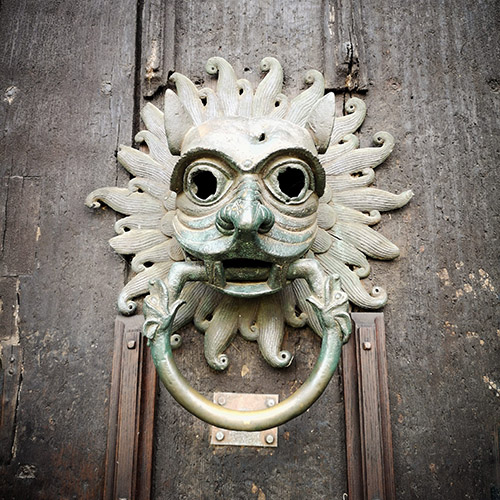
If you’d killed someone in self-defence, or broken out of prison, you could claim Sanctuary in the Cathedral. All you had to do to gain admittance was rap that particular knocker. Monks sat in chambers above the entrance to keep an eye out for anyone seeking sanctuary. Once inside, you had 37 days of sanctuary, which would either give you time to plan an escape or reach an agreement with your enemies. Those seeking sanctuary wore a black robe, with St Cuthbert’s Cross on the left shoulder to mark them out.
It appears that both King Guthred (of Northumbria between 883-894) and King Alfred the Great confirmed the Right to Sanctuary. It was abolished in 1624 (Durham World Heritage Site 2010-25).
What do we make of these church curiosities?
Of course, these are just a handful of the church curiosities you might find. I’ve stuck largely to England and Scotland, but I have no doubt you’ll find plenty of sculptures, carvings, and weird oddities in your nearest church. Even contemporary churches that often look more like leisure centres will have something to offer through memorial plaques, artwork, or quirky furnishings.
Yet these ones tell us a lot about the preoccupations of earlier times. The apotropaic marks explore ways people tried to protect themselves and their communities. Gargoyles played a practical role, though they became so intrinsic to church design that stonemasons turned them into grotesques once gargoyles lost their function. Misericords preserve mythological beings, which should be antithetical to church ideas, but they do so in a relatively obscure part of the church. The artists who made them would never realise that centuries later, tourists would admire their work on a quiet weekday afternoon.
Such preoccupations bring us one step closer to those who held them. And we have to ask, are we really so different?
Are there any odd features in a church near you? Let me know below!
References
Brady, Karl, and Chris Corlett (2004), ‘Holy Ships: Ships on Plaster at Medieval Ecclesiastical Sites in Ireland’, Archaeology Ireland, 18 (2), pp. 28–31.
Durham World Heritage Site (2010-25), ‘Sanctuary Knocker’, Durham Castle and Cathedral, https://www.durhamworldheritagesite.com/learn/architecture/cathedral/intro/sanctuary-knocker. Accessed 20 April 2025.
Gibson, Louis H. (1893), ‘Gargoyles’, Modern Art, 1 (4).
Harding, Mike (1998), A Little Book of Misericords, London: Aurum Press.
Ibeji, Mike (2011), ‘Black Death’, BBC History, https://www.bbc.co.uk/history/british/middle_ages/black_01.shtml. Accessed 20 April 2025.
Jones-Baker, Doris (1981), ‘The Graffiti of Folk Motifs in Cotswold Churches’, Folklore, 92 (2), pp. 160–67.
McGhee, Sandra (2018), ”Alien’ Gargoyle’, Atlas Obscura, https://www.atlasobscura.com/places/paisley-abbey-gargoyle. Accessed 20 April 2025.
Misericords (2018), ‘Misericords in British Cathedrals’, Misericords, https://www.misericords.co.uk/uk_cathedrals.html. Accessed 20 April 2025.
Ravilious, Kate (2015), ‘Writing on the Church Wall’, Archaeology, September/October, pp. 52-62.
Woodcock, Alex (2022), ‘Gargoyles and Grotesques: Why are there monsters on medieval churches?’, talk for Sideways collective, 23 July, online.
Wright, James (2024), Historic Building Mythbusting: Uncovering Folklore, History and Archaeology, Cheltenham: The History Press.
Nutty about folklore and want more?
Add your email below and get these posts in your inbox every week.
You'll also get my 5-step guide to protecting your home using folklore!

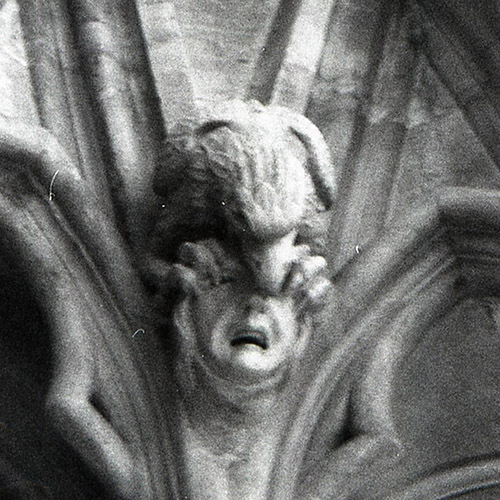
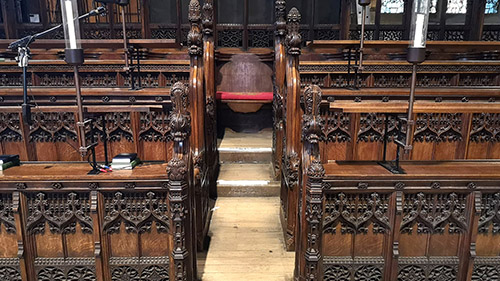
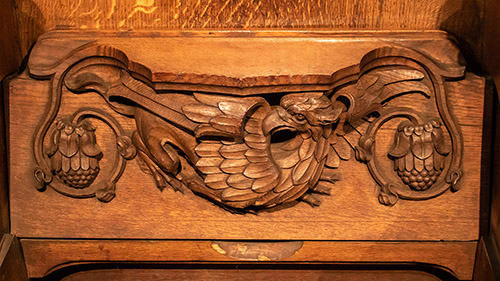

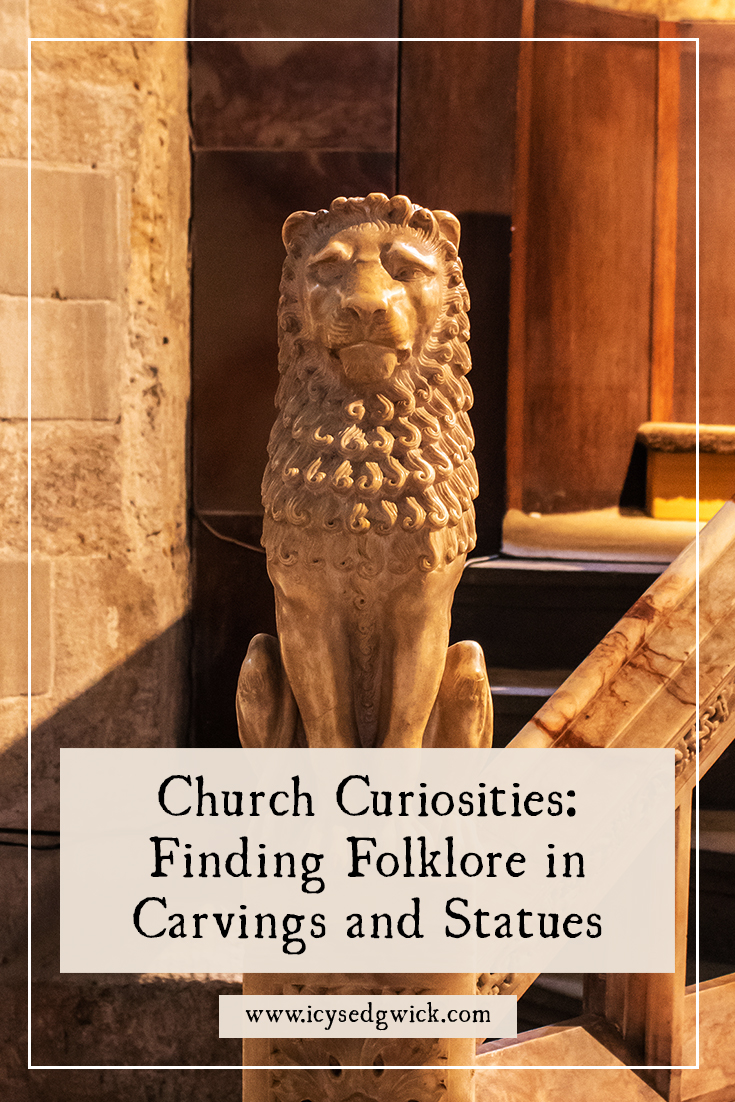





Have your say!